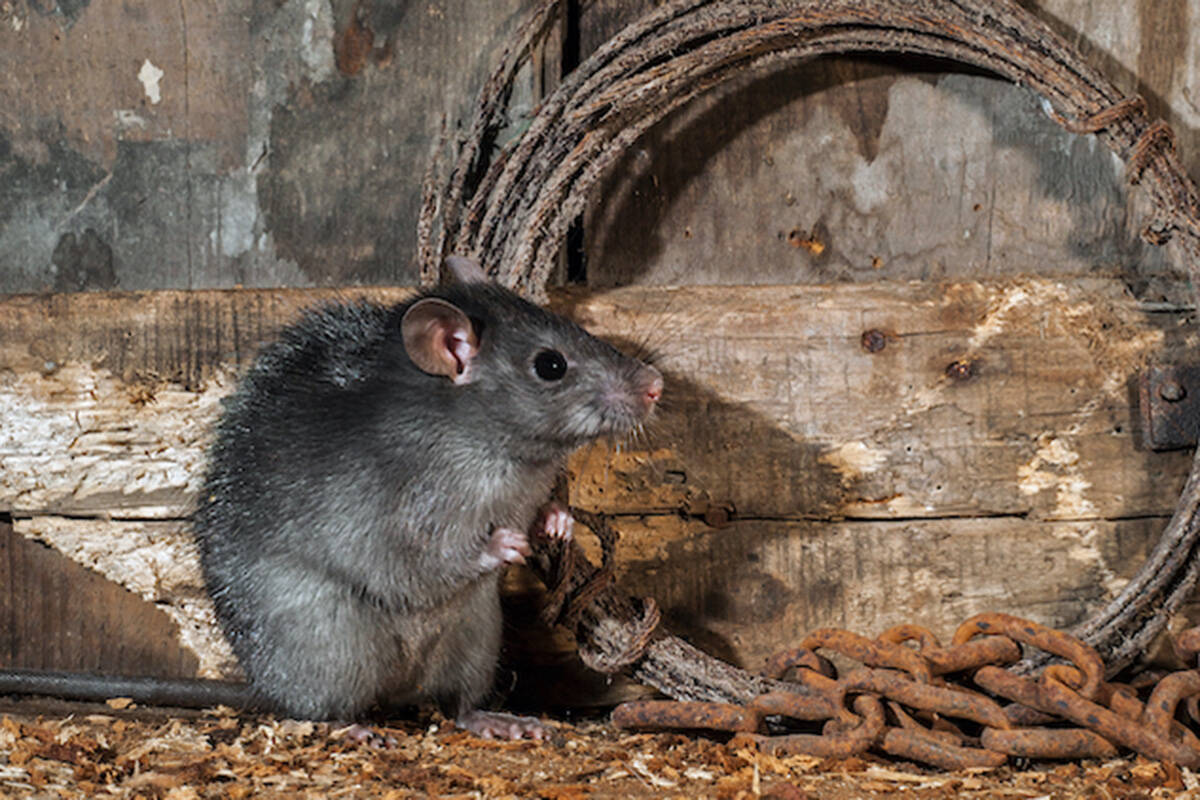A hitchhiking rat found its way from B.C. into a Red Deer garage on the weekend.
Provincial rat specialist Karen Wickerson said the long-trailed critter was spotted on the weekend by a Red Deer man who had recently parked an old pickup at his home that he had transported on a flatbed from B.C. to be restored.
It is believed the black (or roof) rat hitched a ride. Almost certainly tired, thirsty and hungry, the rat was spotted by the homeowner inside his garage.
“He saw something move and then he did actually see it in the window trying to get warm in the sun because the garage wasn’t heated. He found some chewing as well.”
When the man’s dog showed up, the rat was scared off. The quick-thinking homeowner shut the door of the garage so the rat could not escape. He unsuccessfully tried to corral it in a gopher trap.
However, he did manage to get some photos, which ended up before Wickerson on Monday.
She headed to Red Deer to check out the sighting for herself. And sure enough, it was a rat — an ex-rat as it turned out. By the time Wickerson got to Red Deer on Monday afternoon the rat was no more.
“We found it dead, sitting on the workbench.”
Likely, the rat succumbed to a lack of food and water during its long journey to Alberta, said Wickerson.
Alberta takes its status as Canada’s only rat-free province very seriously. However, despite 70 years of vigilance and a ban on rats as pets, a couple of dozen or so rats do manage to sneak in each year, mostly as hitchhikers on transport trucks and other vehicles returning to Alberta from B.C., but sometimes from provinces to the east as well.
Last year, 31 rats were identified in Alberta. In 2020, 26 rats were found.
Wickerson said up to five infestations are discovered each year.
“That’s usually in the rat control zone right along the Alberta-Saskatchewan border,” she said, of the 600-km band running from the U.S. border to Cold Lake. “The rest are basically all hitchhikers.”
Suspected rat sightings are common. The province fielded 460 calls alone last year. Of those, 222 turned out to be muskrats, which because of their long tails are often mistaken for rats.
“It is important to follow up because there always is the risk it could be a female rat,” she said. “We consider an infestation two or more rats so we do take it seriously and we always trace the source and figure out why they would be here and talk with the people who find it (and tell them) to keep an eye out in case there is another one.
“But most commonly it is just a single.”
The two types of rat to be on the lookout for are Norway rats, which are the most well-known adversary. Black rats, like the one that showed up in Red Deer are often associated with ports and ships and so are increasingly being spotted in B.C.
The two look quite different. A roof rat’s tail is longer than its body, whereas a Norway rat’s tail is shorter.
Another source of rats is the Okanagan, from Salmon Arm to Penticton, a popular destination for many Albertans. “There are apparently quite a few rats there too,” she said.
It is a good idea for those returning to Alberta to check out their vehicles and recreational vehicles to make sure they are not bringing unwanted company home.
Wickerson said rats are a menace because of the damage they can do on farms. Rats often get into granaries or hay bales.
“They can eat a large amount but also the urine in their feces renders it unfit for consumption.
“They cause a lot of damage to buildings as well. In the urban areas, that, and the spread of disease, are really the main concern.”
“If you find a dead one, definitely don’t pick it up with your hands.”
For those who think they have seen a rat, the best response is to send an email, and make sure you attach photos if you have them, to 310rats@gov.ab.ca. The toll-free rate hotline (310-3276) is also available.
RELATED: ‘I couldn’t leave them’: B.C. road worker rescues rats left in box at highway rest stop
RELATED: ‘Aggressive’ pet rat results in denied taxi ride for Okanagan woman

